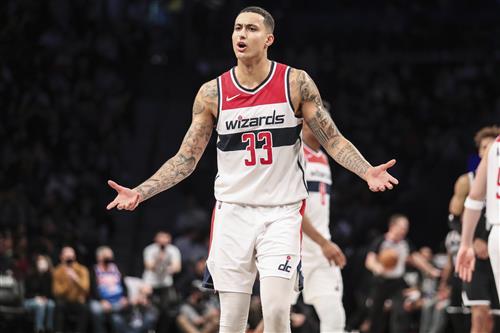
We still might see a few signings to round out rosters as NBA teams load up for the 2022-23 season—an Eric Bledsoe or Jeremy Lamb here, a Tony Snell or Hassan Whiteside there—but, for the most part, this summer’s free agency period has concluded. NBA front offices never stop looking ahead, though, and with the league recently projecting the 2023-24 salary cap at $133 million, you can bet they’re already mapping out contingency plans for next summer’s market.
The quality of the 2023 free agent class dipped as soon as LeBron James chose to extend his contract on Wednesday. Whether it declines further will depend largely on the decisions of several All-Stars: namely, whether James Harden, Draymond Green, and Khris Middleton pick up their 2023-24 player options or work out new long-term deals, and whatever the hell winds up happening with Kyrie Irving—in Brooklyn or elsewhere. (I note here with relish that Patrick Beverley will also be a free agent next summer, because I don’t want the smoke.) Even if there doesn’t wind up being a ton of star power at the top of the market, though, next summer’s class is poised to feature a few intriguing players who are in position to play big roles—and potentially earn even bigger bags—in the final season of their current contracts.
Let’s take a look at some of the most compelling names in the 2023 class to keep an eye on this season, starting with a Grit and Grind throwback on the next-gen Grizz:
Dillon Brooks, Grizzlies
Thanks to a little thing called recency bias, there’s an excellent chance that the sight of Brooks’s name caused you summon two memories: him clobbering and subsequently injuring Gary Payton II on a breakaway dunk in the Western Conference semifinals, and him bricking jumper after jumper during Memphis’s six-game loss to the eventual champion Warriors. Zoom out from those ugly specifics to consider Brooks’s game and standing in its broader context, though, and a sunnier picture begins to emerge—one that, if Middleton stays put and Andrew Wiggins extends his contract in Golden State, might make the 26-year-old the best two-way wing available next summer.
The Mississauga product plays like a mauling mid-century middleweight, forever leading with his chin to get into opponents’ personal space. That predilection toward physicality can get Brooks in trouble—he’s averaged 5.7 personal fouls per 100 possessions over five pro seasons—and it doesn’t exactly endear him to fans of the teams Memphis faces. It’s helped give the new-look Grizzlies an attitude and edge befitting their franchise forebears, though, and has proven quite handy for Taylor Jenkins’s defense.
Scarcely anybody routinely takes on tougher jobs than Brooks, whose list of most frequent defensive assignments reads like an All-NBA ballot. He has ranked in the 99th percentile in average matchup difficulty each of the last two seasons, according to The B-Ball Index, and Memphis has allowed fewer points per possession during his minutes in all but one of his seasons. Combine that level of point-of-attack effectiveness with a 6-foot-7, 225-pound frame that enables him to check elite perimeter playmakers across three positions—and, in a pinch, switch onto and bang with some bigs—and you’ve got a pretty solid building block. What makes Brooks even more intriguing, though, is the juice he brings on the other end of the court, particularly when it comes to pressuring the rim. He can be a force with a live dribble, producing points on 73 percent of his drives last season—ninth-best out of 139 players to average at least five drives per game, according to Second Spectrum—due partly to his ability to seek out and finish through contact.
Brooks can sometimes get too shot-happy—particularly considering he shot just 48 percent inside the arc and 31 percent outside it last season, making him one of the least accurate high-usage players in the NBA. But as ugly as it can look when he’s forcing tunnel-vision jumpers, that kind of confidence and aggression can also make him exceptionally dangerous when it’s all clicking—like when Brooks averaged a shade under 26 points per game on .595 true shooting against the Jazz in the opening round of the 2021 playoffs. And it’s not as if Brooks hasn’t been productive: While injuries limited him to just 32 games and 885 minutes last season, he was one of just 22 players to average at least 24 points and three assists per 36 minutes of floor time, according to Stathead. Of the other 21, the only one with a lower turnover rate was Klay Thompson; the only one to post a better defensive estimated plus-minus was Paul George.
It’s possible that Brooks, who’s now eligible for an extension of the three-year deal he signed back in 2020, won’t reach unrestricted free agency. But if he decides that the maximum re-up Memphis can offer him—four years, $61.3 million—doesn’t quite match what he might be able to get on the free market after watching squint-and-they’re-similar players like Luguentz Dort, Norman Powell, and Tim Hardaway Jr. all get both higher annual average salaries and more total money on their new deals, the stage could be set for an awfully interesting contract year.
Gary Trent Jr., Raptors
Only six players age 23 or younger averaged 18 points per game and shot 38 percent from 3-point range last season. Three (Trae Young, Darius Garland, LaMelo Ball) were All-Stars. One (Tyler Herro) won Sixth Man of the Year, and another (Desmond Bane) was a top-five finisher in Most Improved Player voting.
The sixth, as you surely deduced from the heading of this section, was Trent, who authored a breakout season for a Raptors team that bounced back to return to the playoffs—and who, in the process, might have put himself in position to secure an All-Star-level payday should he choose to decline his $18.6 million player option for the 2023-24 season.